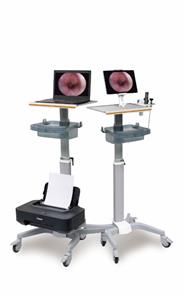Diagnostic performance of magnetic resonance imaging, cystoscopy and 3D ultrasound in the diagnosis of bladder endometriosis
evaluate the performance of 3D ultrasonography in the diagnosis of bladder endometriosis and compare it with the results of uro-MRI, cystoscopy and postoperative histopathology. Methods A retrospective observational study was used to collect 16 patients with bladder endometriosis who were admitted to our hospital from March 2017 to June 2020. The patient's age, symptoms, cystoscopy, 3D ultrasound were obtained through the electronic medical record database. and MRI diagnostic data, as well as pathological findings for statistical analysis. Results The pathological results were different from the imaging results. The lesions detected by transvaginal ultrasonography (TVUS) were (-3.5±6.4) mm, while those detected by MRI were (-5.75±11.9) mm. There was no difference between the imaging and pathological findings. Significant difference (P=0.20), no significant difference between imaging findings (TVUS and MRI) (P=0.73). Compared with MRI, the accuracy of 3D ultrasound was slightly improved (P=0.08). Conclusion 3D ultrasonography is superior to cystoscopy and is as effective as MRI in the diagnosis and preoperative examination of bladder endometriosis.




